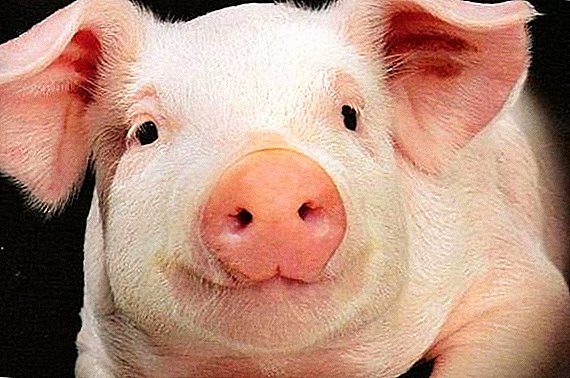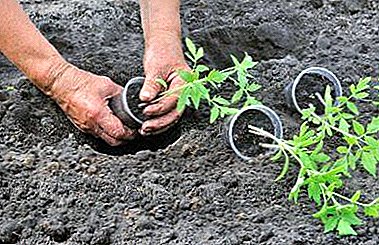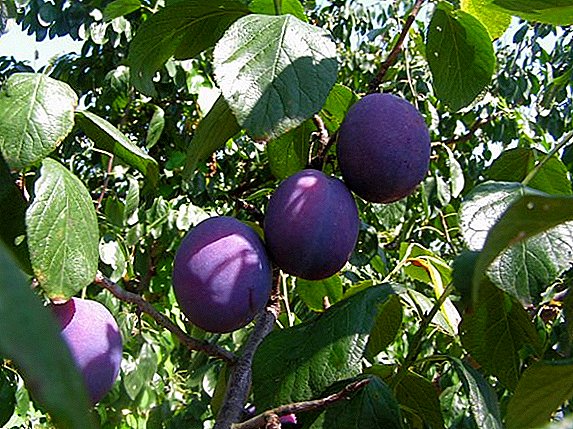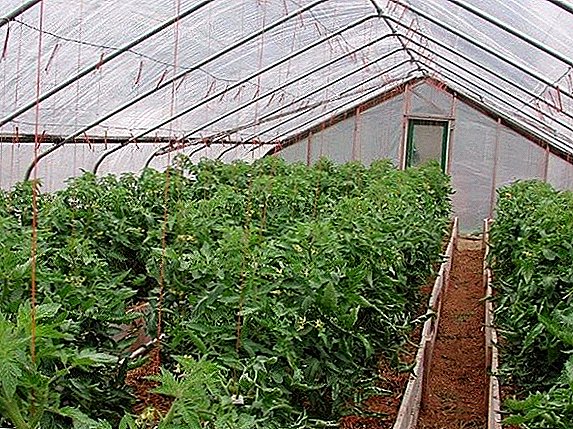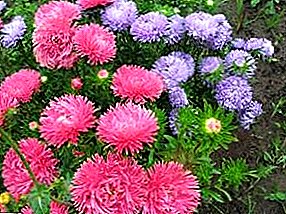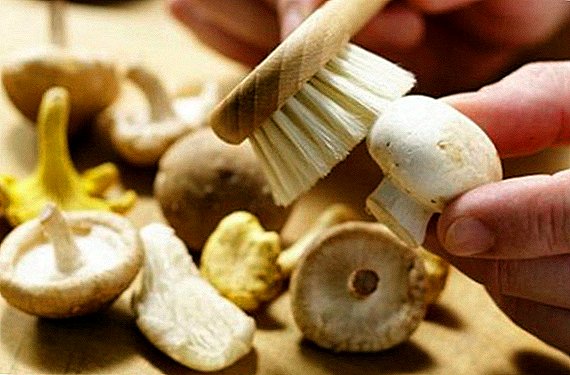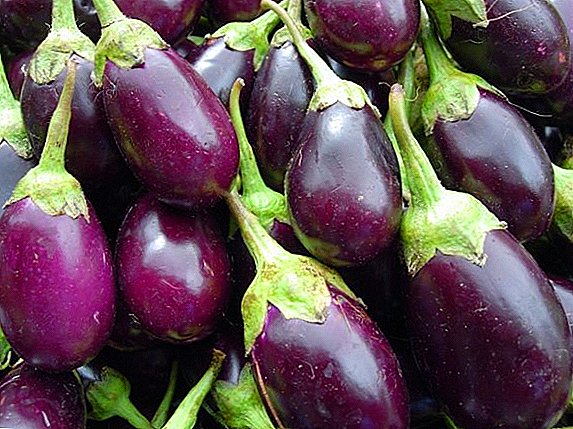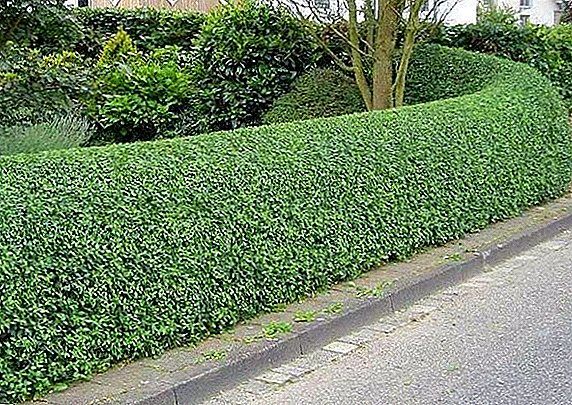 Kizilnik brilliant - quite an interesting plant, which belongs to the family of Pink. It is great for creating hedges, so it is actively grown in private areas and in parks or squares. In the wild, it can be found in Eastern Siberia, China and Buryatia. Growing cotoneaster can be easily done in urban environments, since it is practically immune to dust and gases, frost-resistant and drought-resistant. Let's find out how to plant shiny cotoneaster and what kind of care it needs to ensure that the plant pleases with its appearance.
Kizilnik brilliant - quite an interesting plant, which belongs to the family of Pink. It is great for creating hedges, so it is actively grown in private areas and in parks or squares. In the wild, it can be found in Eastern Siberia, China and Buryatia. Growing cotoneaster can be easily done in urban environments, since it is practically immune to dust and gases, frost-resistant and drought-resistant. Let's find out how to plant shiny cotoneaster and what kind of care it needs to ensure that the plant pleases with its appearance.
Kizilnik brilliant: description and characteristics
Kizilnik brilliant is a densely leafy, upright and deciduous shrub, reaching a height of two meters. It has small (about 4 cm) dark green ovate leaves, pointed at the end. They have a smooth surface, so that the plant can be classified as decorative. Leaves appear in early spring and have a soft green color.
A characteristic feature of this plant is the ability to change its color: with the arrival of autumn, the cotoneaster fence becomes purple. Inflorescences are pink, corymbose and combine 5-8 flowers. The bloom of the cotoneaster begins in May or at the beginning of June, after which round fruits, similar to small berries, are formed (they remain on bushes until autumn). The cotoneaster flowers themselves are inconspicuous, but when they simultaneously open, pink buds look more than attractive against the background of green leaves, giving the bush additional decorative effect.
 The fruits of the shiny cotoneaster are formed from almost every flower. At the initial stage of maturation, they are green, but over time they change color and become saturated red. When berries are fully ripe (change color to black), the cornel of this species is completely edible.
The fruits of the shiny cotoneaster are formed from almost every flower. At the initial stage of maturation, they are green, but over time they change color and become saturated red. When berries are fully ripe (change color to black), the cornel of this species is completely edible.
In the wild, this shrub most often grows alone, although thickened plantings of cotoneaster, which we are more used to seeing in private gardens, are also common. When grown in a midland, both the open areas with good sunlight and shady areas are equally well suited for it, but we'll talk about this later.
Did you know? Cornel has useful healing properties that have long been known in Tibet (the plant was used in septic conditions and in dysentery).
Advantages and disadvantages of the form
When breeding a cotoneaster, it is important to consider not only the advantages of growing this plant, but also to take into account the existing drawbacks. The advantages of the presence of a cotoneaster brilliant on its site include the following:
- unpretentious care and tidy appearance;
- good resistance to both frost and dry periods;
- almost complete immunity to disease;
- unpretentiousness in growing conditions (it feels great in places of severe air pollution with soot, dust, exhaust gases);
- undemanding to the composition of the soil and the level of illumination of the site.
 All this allows planting seedlings of a cotoneaster shining in parks and even on city streets. At the same time, we should not forget about the minuses of choice for growing this particular plant. These include:
All this allows planting seedlings of a cotoneaster shining in parks and even on city streets. At the same time, we should not forget about the minuses of choice for growing this particular plant. These include:- the need for regular pruning of the cotoneaster;
- comparative reproduction difficulty.
Features planting cotoneaster brilliant in the garden
All the types of cotoneaster existing today calmly endure the landing and take root in the new place almost painlessly. But for breeding the cotoneaster brilliant by planting seedlings in open ground, it is better to wait until spring comes (the early spring also fits as soon as the snow melts and the night frosts lose their former strength) or perform the procedure at the end of autumn.
How to choose a place for planting a cotoneaster brilliant, exacting type of lighting
Cotoneaster bushes are best placed in well-lit areas, although they grow well in penumbra. In any case, the prepared site should be well protected from the wind, as well as be distinguished by deep groundwater. The planting pattern of the cotoneaster involves placing the seedlings at a distance of 1.5-2 meters from each other (more accurate figures depend on the future diameter of the crown). Plant seedlings are buried 70 cm into the soil.
Important! When planting any plant (including shiny dogwood), it is important to have a good drainage layer up to 20 cm thick. Gravel and crushed bricks are well suited for the role of drainage.
The requirements of the cotoneaster shining to the soil
 The composition of the soil for the cotoneaster brilliant does not play a significant role, but at the same time for its proper and rapid development It is necessary to prepare the following soil mixture: Mix 2 parts of sod land with 1 part of peat or compost and 2 parts of coarse sand. It is also useful to add lime to the obtained substrate at the rate of 300 g per 1 m² of land area.
The composition of the soil for the cotoneaster brilliant does not play a significant role, but at the same time for its proper and rapid development It is necessary to prepare the following soil mixture: Mix 2 parts of sod land with 1 part of peat or compost and 2 parts of coarse sand. It is also useful to add lime to the obtained substrate at the rate of 300 g per 1 m² of land area.
How to plant a cotoneaster brilliant in the garden: technology and planting scheme
First of all, it should be noted that the reproduction of the brilliant cotoneaster is not an easy process. Basically it is carried out using seeds, but often also used vaccinations, cuttings and cuttings (vegetative propagation).
Seed method
If you have chosen the seed method of breeding a cotoneaster, then be prepared for the fact that only half of the seedlings will immediately rise and some of them may ascend next year. To increase the germination of seeds, before planting, it is better to stratify them throughout the year. To do this, after collecting in October, the seed material is placed in a metal container and sent to storage in the refrigerator or in the open air. Planting is carried out next year in the fall.
Important! To reduce the period of preparation, you can immerse the seed in sulfuric acid, leaving it there for 20 minutes, and then stratify within a month.
 Before being placed in the soil, the seeds should be soaked in warm water, after which all the emerging specimens are collected and discarded, as they will not germinate.
Before being placed in the soil, the seeds should be soaked in warm water, after which all the emerging specimens are collected and discarded, as they will not germinate.Healthy and complete seeds are placed in the ground to a depth of 4 cm and sprinkled on top of the soil. It is also important to observe the distance between the rows: it must be at least 15 cm.
Do not expect quick shoots, because germination of the cotoneaster seeds is very difficult, and even with full observance of all conditions of planting and further care, germination often does not exceed 20-30%. During the first year, germinated seedlings grow up to 30 cm in height, and a year later the formation of the crown begins. Flowering occurs no earlier than 4 years.
Due to the fact that the seeds sprout so badly, in the wild, kizilnik shiny is very rare. To increase your chances of success, It is recommended to sow the seeds very densely. Repot the bushes when they are at least 1-2 years old.
Vegetative reproduction
The most common method of vegetative propagation of the cotoneaster is brilliant - this is reproduction by cuttings. For grafting harvesting green or lignified cuttings. In any case, the selected specimens must be well developed and large, at least 15 cm long. In addition, at least two interstices must be present on each such part. The best time to perform the procedure is July.
 Before planting the cuttings, it is better to place them in a root formation stimulator for several hours, and then plant them in boxes in a prepared substrate. It should consist of humus, sod land and sand, taken in equal amounts. Before placing the cuttings in the ground soil must be well shed with water. The prepared parts of the plant are placed in the ground at an angle of 45 °, deepening the soil by 5 cm. Then they are covered with glass jars, which must be regularly removed to air the cuttings and water them.
Before planting the cuttings, it is better to place them in a root formation stimulator for several hours, and then plant them in boxes in a prepared substrate. It should consist of humus, sod land and sand, taken in equal amounts. Before placing the cuttings in the ground soil must be well shed with water. The prepared parts of the plant are placed in the ground at an angle of 45 °, deepening the soil by 5 cm. Then they are covered with glass jars, which must be regularly removed to air the cuttings and water them.
Important! Instead of cans, it is better to use plastic wrap, which will speed up the rooting of planted cuttings.If all the conditions for planting and caring for the cuttings are observed, by the fall they will have a powerful root system, and they can be transplanted to a permanent place of growth. In winter, young plants must be covered with needles or dry leaves.
If you decide to use lignified cuttings for reproduction, then they should be cut off with the onset of frost, after which it is necessary to place the cut parts in the sand and store them in a cool place. With the arrival of spring, the cuttings are taken from the shelter and cut into pieces up to 20 cm long (there should be at least three buds on each such part). In the future, rooting is the same as in the first case.
Did you know? Cotoneaster brilliant - one of the few species with edible berries. However, despite this, they are rarely eaten.
 The simplest variant of vegetative propagation of the cotoneaster is brilliant is reproduction by layering. You only need to properly prepare the soil in the place where the escape will be stuck. The preparation procedure is simple: they dig up the earth to a depth of 50 cm, after which they add sand and peat, which helps to ensure air access to young roots.
The simplest variant of vegetative propagation of the cotoneaster is brilliant is reproduction by layering. You only need to properly prepare the soil in the place where the escape will be stuck. The preparation procedure is simple: they dig up the earth to a depth of 50 cm, after which they add sand and peat, which helps to ensure air access to young roots.The shoot itself is placed to a depth of about 10 cm from the surface of the soil, fixed with a metal or wooden bracket and sprinkled with soil mixture prepared according to the specified recipe. Carry out the procedure in early summer, and in the fall cut off the layering of the parent bush and until the spring left in the same place. At the beginning of the growing season, the rooted cuttings can be transplanted.
Terms of care brilliant cotoneaster
Caring for a cotoneaster brilliant will not cause you much trouble, however, to grow a beautiful and strong plant that can become a real decoration of the garden, you still need to take into account a few basic requirements.
Demanding irrigation
Any kind of cotoneaster has a high drought resistance, so even in very dry summer shrubs easily do without watering. Adults plants cotoneaster brilliant enough to be watered several times a season, bringing under each bush 8 liters of water. The main thing in this business is to prevent overwetting, because an excessive amount of moisture in the soil can destroy the cotoneaster.
On hot days, especially if the plant grows in dusty places, it can be periodically refreshed by flushing the dust from the foliage of the shrub. This is especially true in the case when the hedge serves as a fence and is located on the border of the site.
Did you know? Berries cotoneaster brilliant, which, as we have already noted, are quite edible, most often used in the preparation of tea drinks, as well as tinctures and wines. In general, the dietary properties of these fruits can be used to create candy, marshmallow and gingerbread, which is especially valuable for diabetics.
How to fertilize a plant
 How fast the cotoneaster will grow is brilliant, largely depends on the regularity of fertilizer application. So, if you want to get a beautiful and abundant crown, having achieved good growth during the season, then it is necessary to feed the shrub with nitrogen-containing fertilizers, and before direct flowering (approximately in the middle of May) a bush should be applied under the bush, containing phosphorus and potassium (for example, superphosphate). You should not overlook the organic matter (humus or manure). Slurry is diluted in water at a ratio of 1: 6, and when using bird droppings, 1 part of fertilizer should account for 10 parts of water. The resulting composition shed the soil during the spring digging around the shrub. The same method can be used to fertilize the soil with the help of dry complex formulations.
How fast the cotoneaster will grow is brilliant, largely depends on the regularity of fertilizer application. So, if you want to get a beautiful and abundant crown, having achieved good growth during the season, then it is necessary to feed the shrub with nitrogen-containing fertilizers, and before direct flowering (approximately in the middle of May) a bush should be applied under the bush, containing phosphorus and potassium (for example, superphosphate). You should not overlook the organic matter (humus or manure). Slurry is diluted in water at a ratio of 1: 6, and when using bird droppings, 1 part of fertilizer should account for 10 parts of water. The resulting composition shed the soil during the spring digging around the shrub. The same method can be used to fertilize the soil with the help of dry complex formulations.
Basics trimming cotoneaster brilliant
To create fences and decorative figures from the cotoneaster, they mainly use molded pruning, after which the shrubs grow quickly, but retain their original shape. When using this method, all shoots are pruned to one third.
Important! The cotoneaster can be given absolutely any shape: square, ball, cone, etc. However, it is necessary to start forming the crown only after the plant reaches a height of 60 cm (on average, this happens at the age of two).To begin with, pinching the tops, which causes the active growth of new shoots. As soon as you get a crown with sufficient thickness, you can proceed to pruning.
 The special hedges are particularly sophisticated and attractive. However, to get a neat and smooth living fence, performing trimming under any geometric shape, you must have special trellis scissors and a tightly stretched rope, although the most acceptable option is a ready-made template made of wooden frame. Such a frame or frame can be created independently: from the bars they make a shape in the form of a trapezoid, in which the upper part will be 10-15 cm lower. Anyway the form for the hedge should correspond to its purpose and height, taking into account the small margin left for the growth of the shoots.
The special hedges are particularly sophisticated and attractive. However, to get a neat and smooth living fence, performing trimming under any geometric shape, you must have special trellis scissors and a tightly stretched rope, although the most acceptable option is a ready-made template made of wooden frame. Such a frame or frame can be created independently: from the bars they make a shape in the form of a trapezoid, in which the upper part will be 10-15 cm lower. Anyway the form for the hedge should correspond to its purpose and height, taking into account the small margin left for the growth of the shoots.
Before cutting between the two frames, which are set across the landings, the rope is tensioned, the correction surface for cutting. In the event that there is a large amount of work to be done on pruning, then it is better to use a special garden tool - a brush cutter.
For young plants, the height of the annual pruning should increase by 5-7 cm until the desired size of the green hedge. You do not need to be very zealous in removing or shortening the lower tier of the branches and it is advisable to leave them 10-15 cm wider than the upper layer, which grows more actively, thereby causing partial darkening of the lower shoots.
Do I need to hide cotoneaster for the winter
 Despite the fact that cotoneaster is a cold-resistant plant, in harsh winters it is still better to shelter him. For these purposes, dry foliage or peat are well suited (a layer of up to 6 cm thick is formed). Branches of bushes that are too high need to be bent down to the ground, which will help keep buds during frosts. When the snow falls, you can add some bushes to them.
Despite the fact that cotoneaster is a cold-resistant plant, in harsh winters it is still better to shelter him. For these purposes, dry foliage or peat are well suited (a layer of up to 6 cm thick is formed). Branches of bushes that are too high need to be bent down to the ground, which will help keep buds during frosts. When the snow falls, you can add some bushes to them.
As you can see, even taking into account all the nuances of care, growing a cotoneaster will not create many problems, but putting a little effort, you get the original decor of your site.



